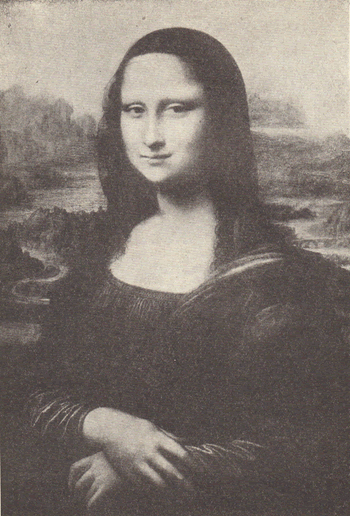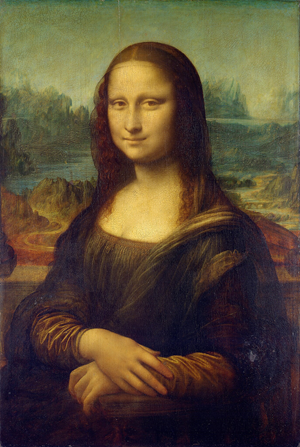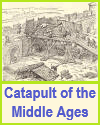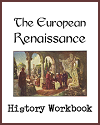| Leonardo da Vinci's Mona Lisa |
|---|
| www.studenthandouts.com ↣ Historical Figures ↣ "L" Names ↣ Leonardo da Vinci (1452-1519) |
 Mona Lisa, by Leonardo da Vinci. Da Vinci is perhaps the best known and most loved artist of the European Renaissance. Click here to enlarge this image.
Mona Lisa, by Leonardo da Vinci. Da Vinci is perhaps the best known and most loved artist of the European Renaissance. Click here to enlarge this image.
Leonardo da Vinci's Mona Lisa, also known as La Gioconda, is one of the most famous and enigmatic paintings in the history of art. Created between 1503 and 1506, and possibly continuing to be worked on until 1517, this masterpiece is housed in the Louvre Museum in Paris, where it attracts millions of visitors each year. The painting depicts a seated woman, Lisa Gherardini, the wife of Florentine merchant Francesco del Giocondo, which explains the alternate name La Gioconda. The portrait is renowned for its subject's elusive expression, often described as mysterious or ambiguous, which has captivated audiences and art historians alike for centuries. This subtle smile has led to extensive speculation and various interpretations about her mood and thoughts. One of the most striking aspects of the Mona Lisa is Leonardo's use of sfumato, a technique that allows tones and colors to blend seamlessly without harsh lines, creating a lifelike and three-dimensional effect. This technique is particularly evident in the delicate rendering of the subject's face and hands, contributing to the painting's realism and depth.  The landscape in the background adds to the painting's mystique. It features winding paths, a distant bridge, and ethereal mountains, painted in a manner that suggests a hazy, dreamlike atmosphere. The contrast between the serene, natural setting and the poised, almost introspective figure enhances the painting's overall sense of harmony and balance.
The landscape in the background adds to the painting's mystique. It features winding paths, a distant bridge, and ethereal mountains, painted in a manner that suggests a hazy, dreamlike atmosphere. The contrast between the serene, natural setting and the poised, almost introspective figure enhances the painting's overall sense of harmony and balance.
Leonardo's meticulous attention to detail and his profound understanding of human anatomy and expression are evident in the Mona Lisa. The painting also reflects his interest in the natural world and his innovative approach to art, which combined observation with scientific inquiry. The Mona Lisa has had a profound influence on the art world and remains a subject of study and admiration. It has inspired countless reproductions, parodies, and references in popular culture, cementing its status as an iconic symbol of artistic achievement. Over the centuries, the Mona Lisa has survived various threats, including theft and vandalism, further adding to its storied history. Despite these challenges, it remains one of the most enduring and celebrated works of art, embodying the genius of Leonardo da Vinci and the timeless allure of Renaissance portraiture. |
 |  |  |  |  |  |
| Renaissance Books and Films | Renaissance Outlines and PowerPoints |
| Renaissance Maps and Pictures | Renaissance Worksheets |
| Renaissance Miscellany | Renaissance Learning Games |
| www.studenthandouts.com ↣ Historical Figures ↣ "L" Names ↣ Leonardo da Vinci (1452-1519) |








